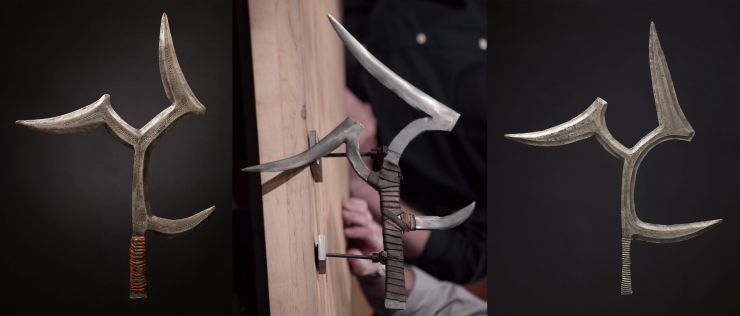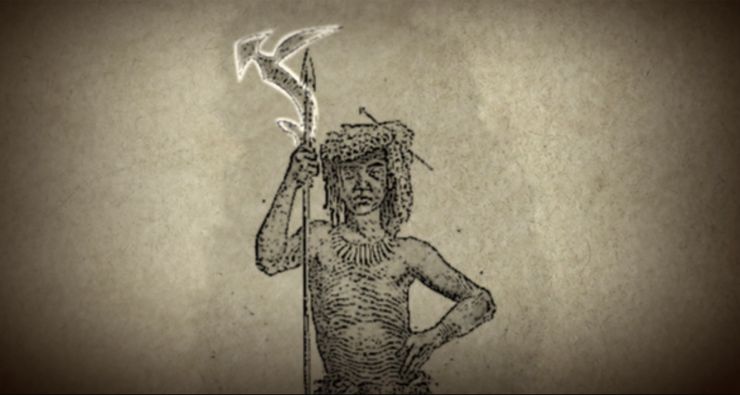Forged in Fire
“The Kpinga.” S4 Ep17, Aug 28 2017, History Channel.
This is the History Channel’s description of the kpinga:
“The kpinga is a throwing knife used in warfare by the Azande people of central Africa [TRUE]. Soldiers carried these lethal weapons inside large shields that could house up to four at a time, allowing them to be brandished at a moment’s notice [TRUE]. Three sharp blades protruding at different angles inflicted brutal injury and made these deadly projectiles difficult to evade [TRUE]. Upon attack, the weapon was thrown in a vertical arc or in a low sweeping arc to sever the nearest limb [TRUE, but EXAGGERATED – these aren’t powerful enough to sever limbs with great ease, as the narrative suggests). The kpinga was so impressive, it became a symbol of power, and to this day is carried only by select nobility [TRUE].
Overall, the History Channel did well to report only documented facts in their description of how the kpinga was used historically, even though they overemphasized the viciousness of its impact. But despite getting the facts mostly right this time, they made one significant error: the blade they are making is not a kpinga.
Near the conclusion of the episode, the host, Wil Willis, speaks to the two remaining contestants before presenting them with their final challenge, which is hidden under a bright red textile. With all the appropriate Hollywood drama, the he lifts the cloth revealing what’s underneath, and with an intense soundtrack playing, he boldly announces: “the kpinga!”

But the knife on display is an Mbanja throwing knife, known as gbo or ndundo (pictured below, left). The Ngbaka Mabo also made a very similar knife, known as ndo (pictured below, right). Either the Mbanja or the Ngbaka Mabo throwing knife could have been the model after which the History Channel fashioned their blade. Importantly, both the Mabo and the Mbanja live more than 500 miles to the west of the Zande, indicating this is no small mixup. Interestingly, there is a group that lives much closer to the Mbanja and the Ngbaka Mabo who use a throwing knife that they call kpinga (one such Yangere kpinga can be seen here). However, the style of this knife is distinct from the Zande’s kpinga, the throwing knives of the Mbanja and the Ngbaka Mabo, and the example used by the History Channel.

The kpinga knife that was used throughout the northeastern D.R. Congo by the Zande and the Nzakara should look more like the knives pictured below. These are the kpinga knives that the History Channel described.

Incredibly, when the History Channel mentioned how the kpinga became a symbol of power reserved for select nobility, they displayed an illustration of a Kreish warrior from Sudan wielding a throwing knife. While the Zande originally inhabited the Sudan before migrating south in the 17th century and today still remain relatively close to where Kreish once threw knives, the image is far off the mark. Kreish throwing knives were not called kpinga, they are stylistically distinct from kpinga knives, and Kreish blades have nothing to do with the symbolism that the Zande assigned to their throwing knives.
